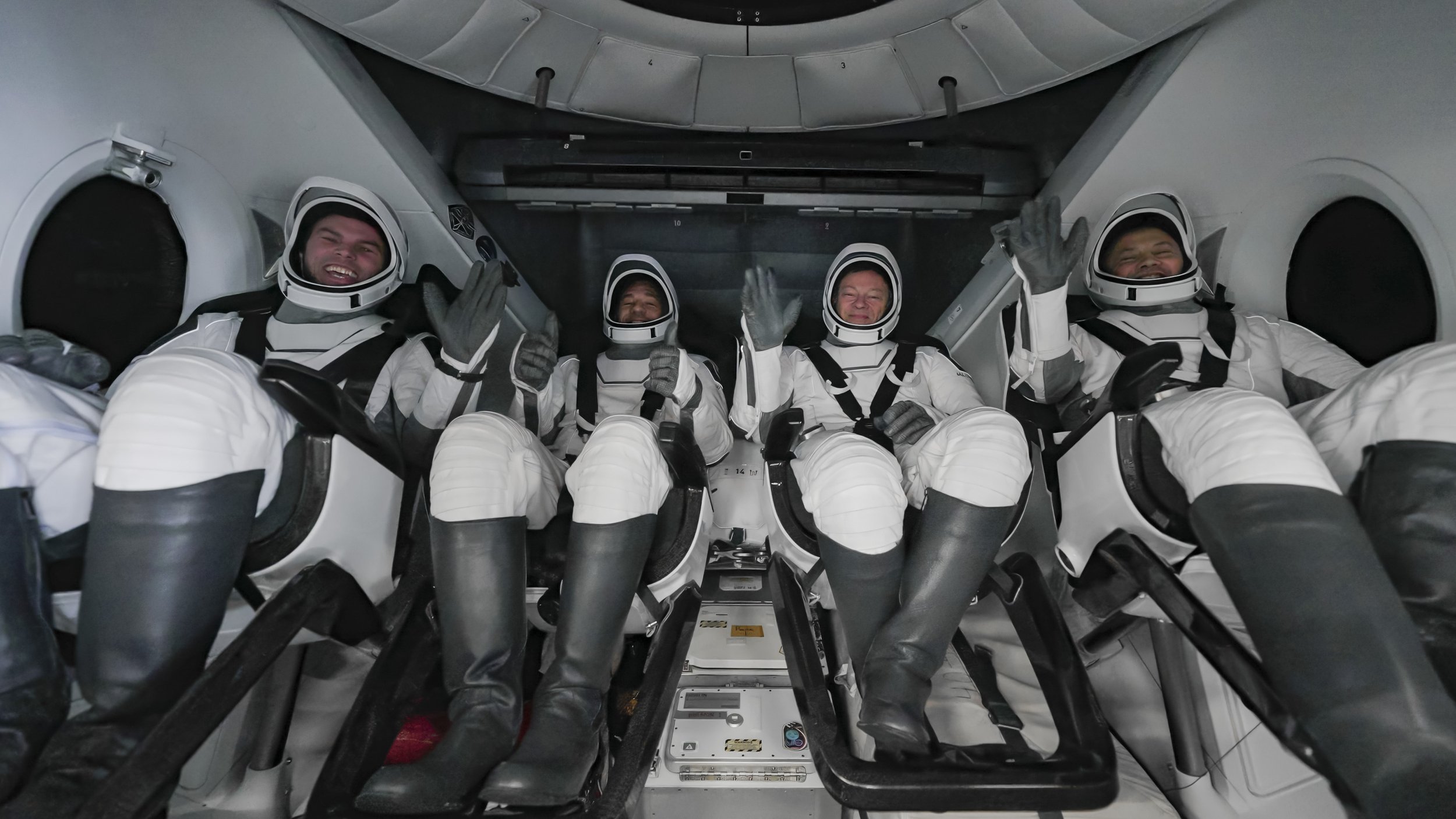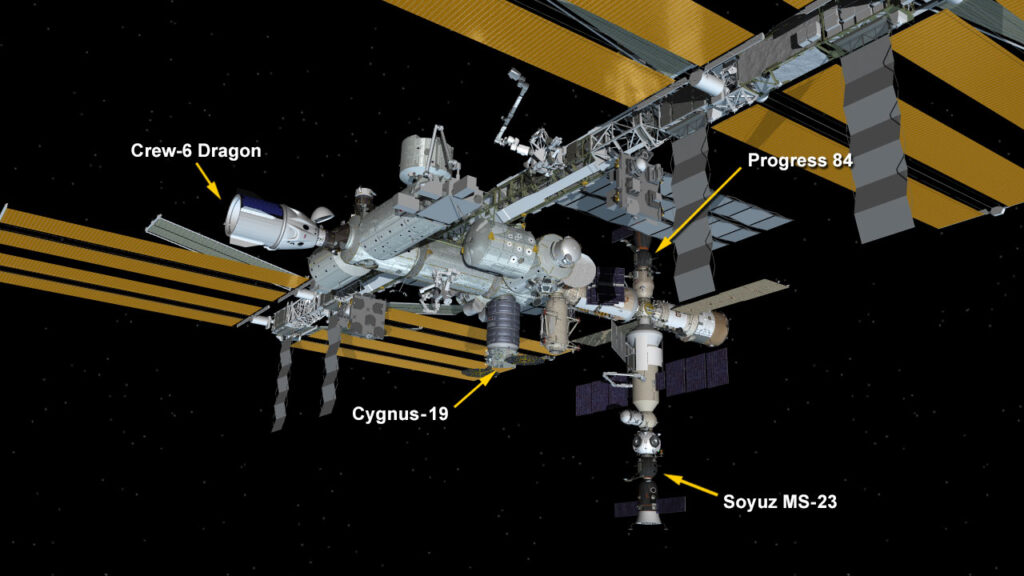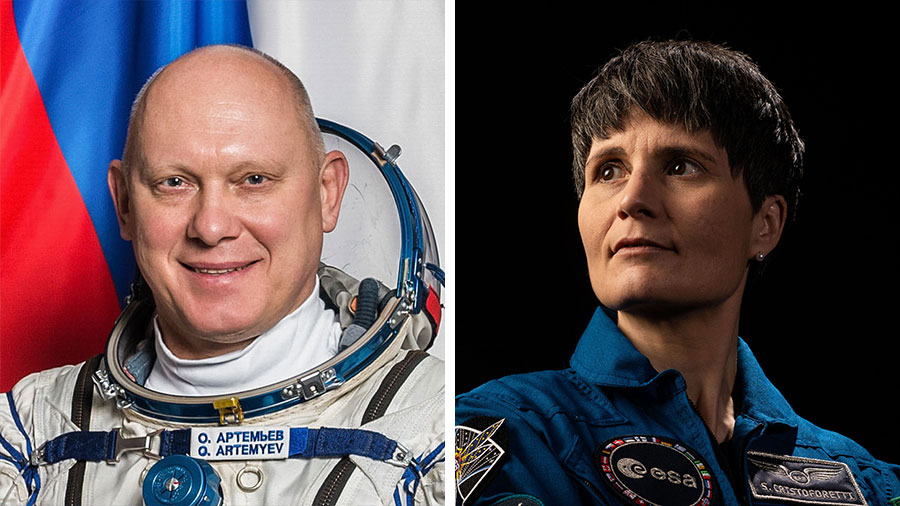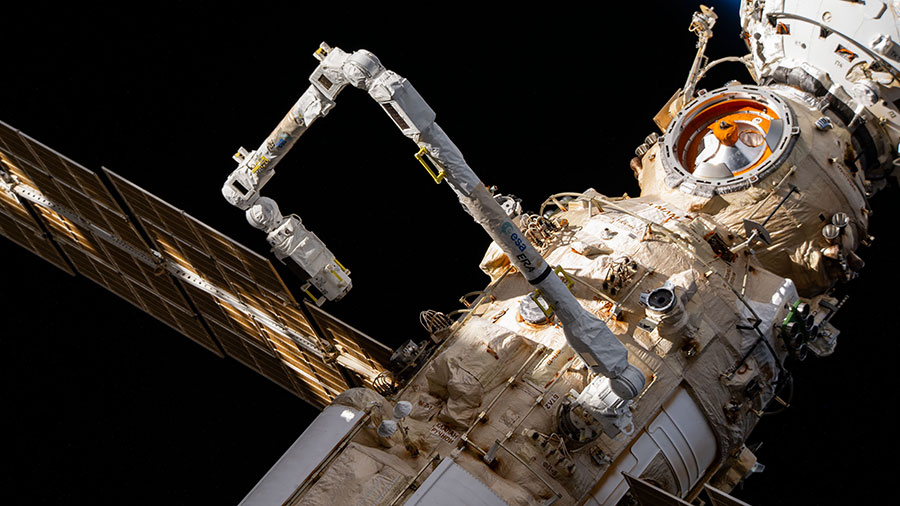
Three International Space Station residents are in their final full day aboard the orbital outpost focusing their attention on Friday night’s departure. The rest of the Expedition 70 crew continued its human research activities ensuring crews remain healthy in space.
NASA Flight Engineer Loral O’Hara is nearing the end of her spaceflight that began on Sept. 15, 2023. She is returning to Earth with Roscosmos cosmonaut Oleg Novitskiy and Belarus spaceflight participant Marina Vasilevskaya aboard the Soyuz MS-24 crew ship. The trio will undock from the Rassvet module at 11:54 p.m. EDT on Friday and parachute to landing inside the Soyuz in Kazakhstan at 3:17 a.m. on Saturday (12:17 p.m. Kazakh time).
Novitskiy and Vasilevskaya arrived at the station aboard the Soyuz MS-25 spacecraft with NASA astronaut Tracy C. Dyson on March 25. The two international crew members will be completing a 12-day mission full of science, education, and maintenance activities. Dyson will remain aboard the orbital outpost for a six-month space research mission.
While packing personal items for return, O’Hara found time to swap brain organoid samples inside a fluorescence microscope for a neurodegenerative disease study. She was assisted by fellow astronauts Dyson and Matthew Dominick who also set up the samples for imaging following the previous day’s test drug injections into the brain organoids. The new drug therapy may prevent and treat Parkinson’s disease and multiple sclerosis on Earth.
Dyson earlier strapped on a specialized cap and attached sensors to herself to simultaneously measure her blood flow, blood pressure, and electrical heart activity for a brain blood flow regulation study. Dominick joined NASA Flight Engineers Mike Barratt and Jeanette Epps for neck, shoulder, and leg vein scans with the Ultrasound 2 device. The trio then moved on to eye checks as Barratt operated the standard medical imaging hardware and viewed Dominick’s and Epps’ retina, optic nerve, and cornea. The biomedical exams inform doctors of the effects of weightlessness on the human body and may lead to treatments for space-caused and Earthbound conditions.
Station Commander Oleg Kononenko and Flight Engineer Nikolai Chub spent their day on a variety of maintenance activities including inspecting Roscosmos segment windows and updating the station’s inventory management system. Flight Engineer Alexander Grebenkin started his day with orbital plumbing work before moving on and investigating futuristic spacecraft and robotic piloting techniques that may be used on planetary missions.
Learn more about station activities by following the space station blog, @space_station and @ISS_Research on X, as well as the ISS Facebook and ISS Instagram accounts.
Get weekly video highlights at: https://roundupreads.jsc.nasa.gov/videoupdate/
Get the latest from NASA delivered every week. Subscribe here: www.nasa.gov/subscribe




